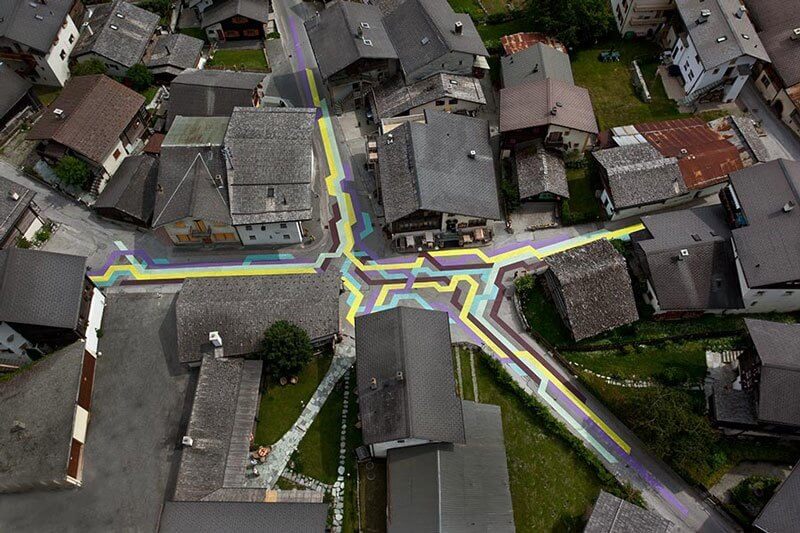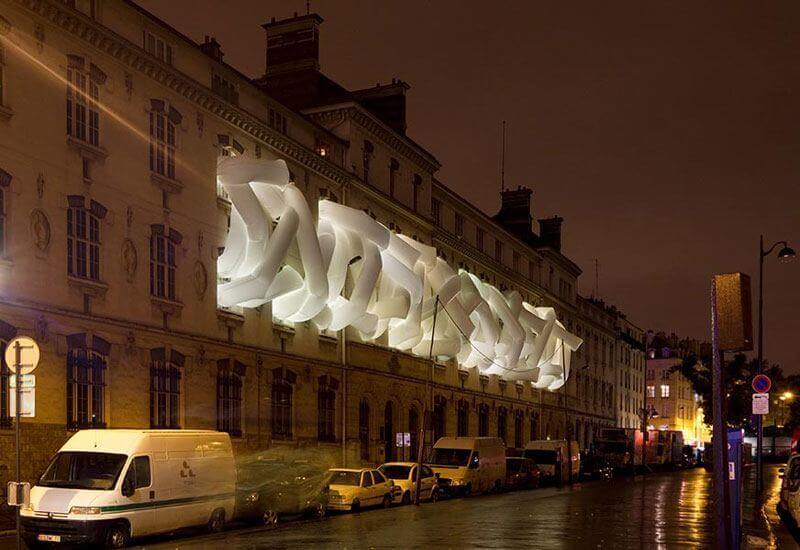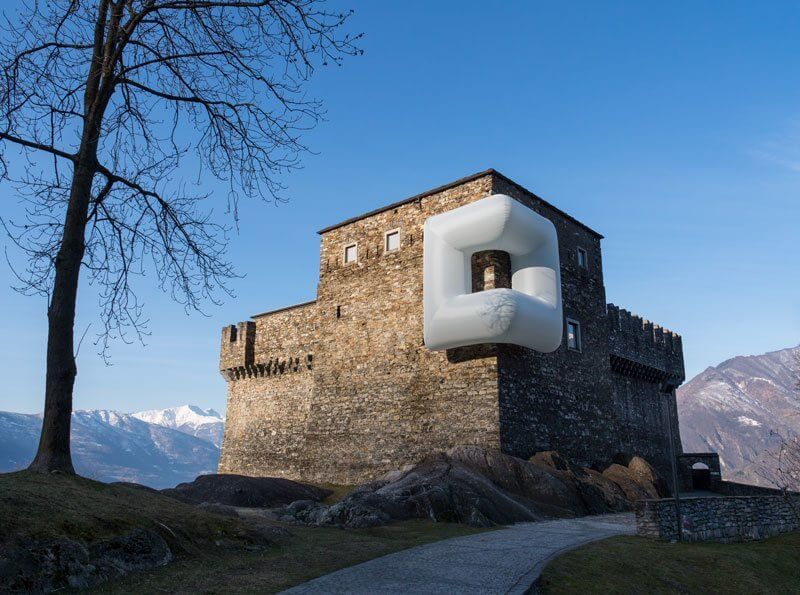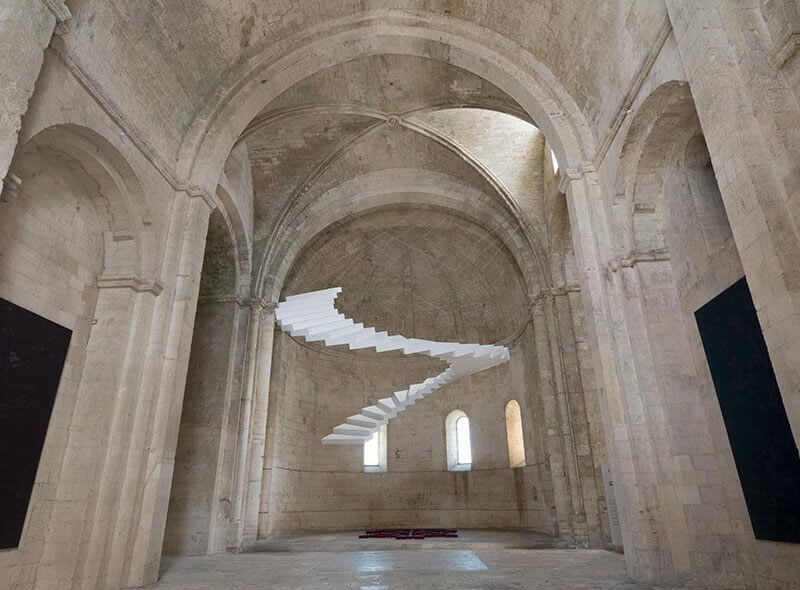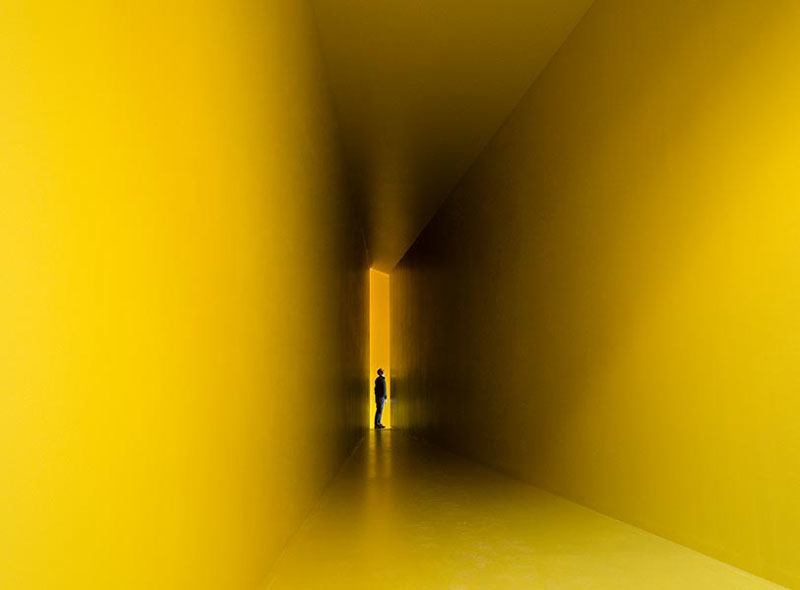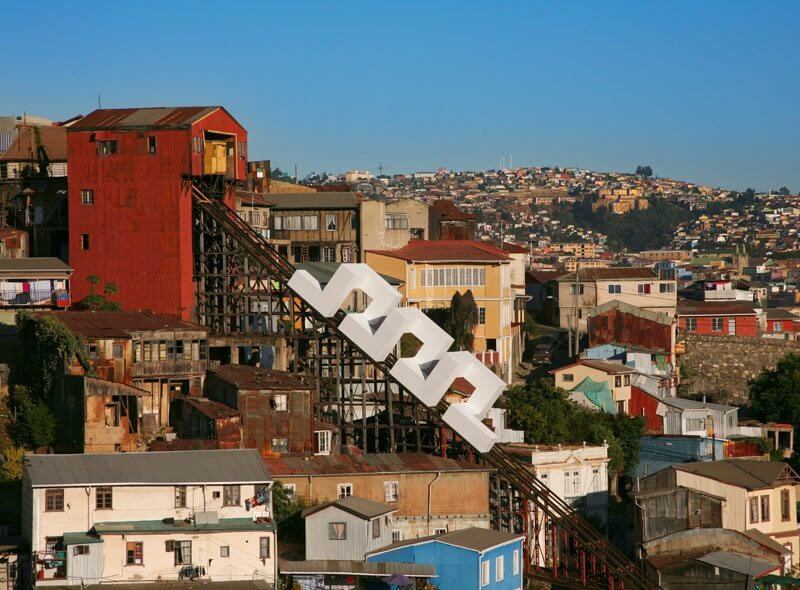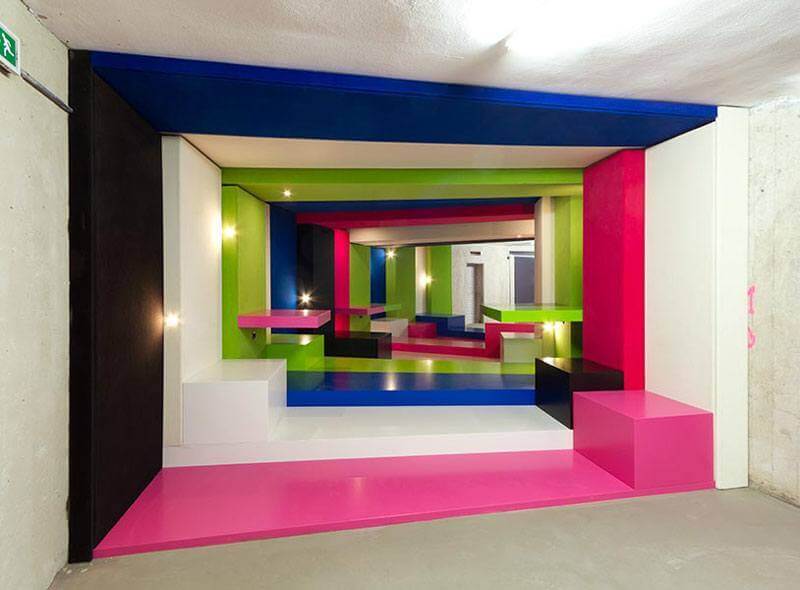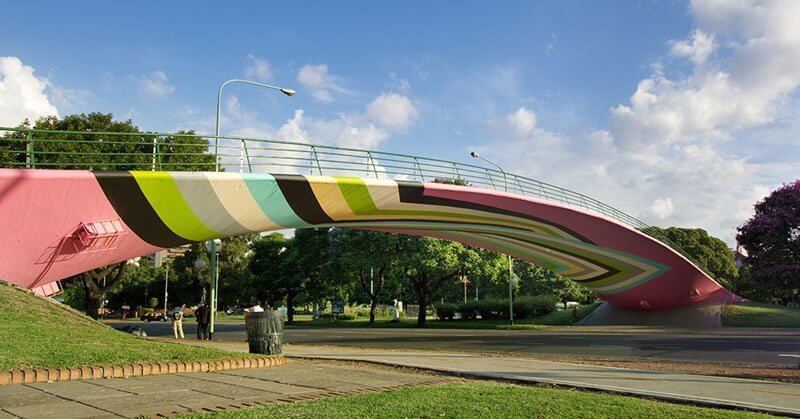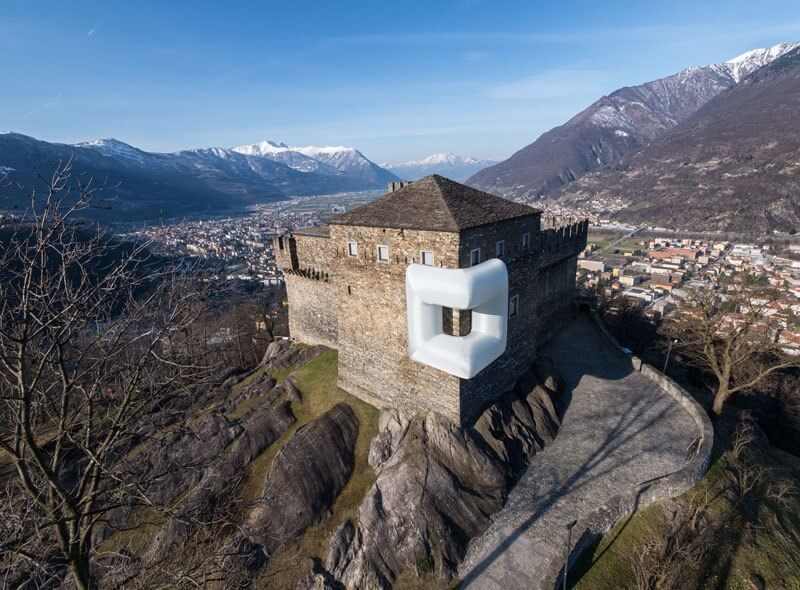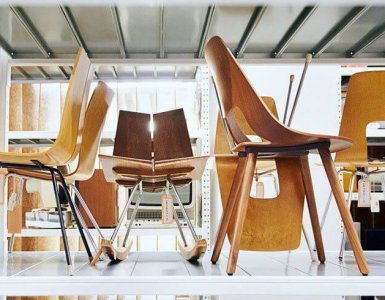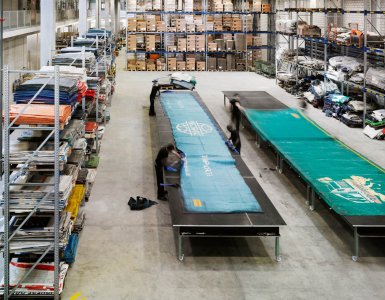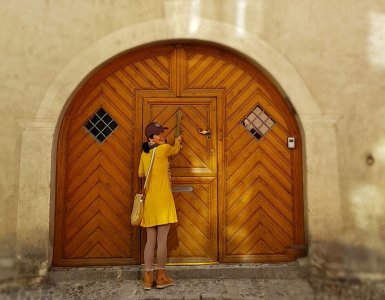Whether you have seen their psychedelic paintings on rural Swiss streets or ogled at their tangle of tubes threaded through windows of a Parisian elementary school, Sabina Lang and Daniel Baumann's (Lang/Baumann) work is a cerebral and sublime experience.
They play with proportion, size, form, and color to create thoughtful pieces that ruminate on the blurred line between public and private.
"Street painting #5" (2010), R-Art, Vercorin, Switzerland
"Comfort #4" (2010), Ecole Elementaire de Belleville, Paris, France, "Nuit Blanche"
"Comfort #13 image 5" 2015 Sasso Corbaro, Bellinzona, Switzerland, "Somewhere between the lines"
To see a Lang/Baumann piece in person, a trip to Bellinzona is in order. The Sasso Corbaro castle is home to two large inflatable objects installed in two corners of the fortress. According to the artists, "the two bulky, bulging, and radiant bodies seem to be clutching the castle from two sides like clamps and, at the same time, pad and protect it on the outside."
It is a striking juxtaposition of ancient and contemporary design.
Find out more about the current exhibit on the Bellinzona Tourism website.
Before visiting the exhibition myself, I wanted to learn a little more about the Burgdorf duo and the process behind their unique craft.
Tell me a little about your artistic backgrounds. How did you two meet?
We met in 1989 in Bern. At the time, we were both still very young and each one of us was just starting to discover a possible artistic language. We both were very interested in collaborations, so we finally decided to work together and develop a common artistic oeuvre.
What formal training do you have? What initially drew you to become an artist? And what made you interested in collaborating with one another?
Originally, we were trained in art school, architecture and window decorating and began using photography, painting, performances and screen printing. We studied these techniques by ourselves, so it was very much an autodidactic approach. It was also a result of our involvement in the alternative culture scene in Bern at the time. We often did collaborative works and performances with other artists and musicians.
We rented a large studio a bit outside of Bern, in an old factory where we had enough space to live and work. After a few years, the direction for our work got clearer, and our interest in space led us towards large installations and projects in public spaces.
Your work combines many aesthetics: Visual, architectural, modern, utopian... How do these different motifs work with one another - or against one another? What does that tension add to your body of work?
Since the beginning, we have used different types of media and there was never a feeling of narrowing down our "multi track" work style. Even today, we still use a variety of materials and techniques: Installations, sculptures, large scale wall or floor paintings, and architectural interventions realized in wood, metal, paint, carpet and inflatable structures.
We really think that our true medium is space, and the use of it and the effect it has on us.
Using a variety of media and materials allows us to answer to different situations in very specific ways. If we realize a work on the façade of a huge building, we might use inflates; if we work inside a small art space, we might choose wood and paint, or for a permanent outdoor sculpture, we might use metal. It is fun to switch from one to another and still try to make a connection between the individual works. Besides, we have the feeling of constantly learning from the challenge of working with diverse materials.
"Beautiful Steps #4" (2013), Abbaye de Montmajour, Aries, France, "Mon ile de Montmajour"
Scope seems to play a large role in your designs. What kind of impact are you trying to make with such hyperbolic, large scale installations?
Most of our projects are limited in time. We take advantage of this limitation and see it as a huge freedom to try out something, test an image that in the frame of a permanent work would never be possible. It is a dream like, surreal image to have a huge inflated square mounted to a historic castle (“Comfort #13”, 2015, Sasso Corbaro, Bellinzona CH).
Obviously, this is only possible since it is a temporary installation. We enjoy the idea of the "afterglow" of this image in the memory of the viewers.
Many of your pieces are interactive and meant to be explored by people. Do you intentionally set out to create this type of work, or do you find people naturally want a multi-sensory experience when it comes to art?
We actually always begin with ourselves as viewers: We assume that if we are interested to make, build or test something and see it, use it or experience it, there will be others who will want to share this with us. It is necessary to very carefully go into the process each time, with a real interest and by trying to analyze and understand the site and answer to it with precision.
"Open #2" (2014), Les Eglises, Centre d’Art Contemporain, Chelles, France
Furthermore, your installations are often outdoors, far away from a traditional museum landscape. Does this suggest that art is for the “everyman”, not just the museum goer?
We like to do both: Work inside an art space, museum or gallery and work in public spaces. It really depends on the place as to what kind of public will pass by. But yes, we do like to offer different points of access for each work and also for people who do not expect to be confronted with art.
"Spiral #3" (2013), Valparaiso, Chile, "Of Bridges & Borders"
"Beautiful Tube" (2011), Wroclaw Contemporary Museum, Poland
Your designs feature strong angles and lines, as well as bold colors and patterns. How do those features add to a medieval city? (For example, the project "Comfort #13" and the street painting in Vercorin.)
Given the limited duration, it is this contrast we seek. At the same time, even if the project seems totally alien, we often have points of departure and connections even if they are not visible at first sight.
"Beautiful Bridge #1" (2011), Puente Figueroa Alcorta, Buenos Aires, Argentina, "Of Bridges & Borders"
"Comfort #13 image 2" (2015), Sasso Corbaro, Bellinzona, Switzerland, "Somewhere between the lines"
Do any projects stand out as particularly meaningful or expressive?
No, but it often happens that we feel most committed to the latest projects as they reflect our current interests.
Lang/Baumann's work can be described as site specific - whether it is transforming bridges, tunnels, roads or buildings in public spaces. And yet, their work is also featured in prestigious and renowned museums around the world. Much like their art, however, Lang/Baumann transcend definition and refuse to be pigeonholed. I eagerly anticipate visiting their current exhibit in Bellinzona and already cannot wait for more.

